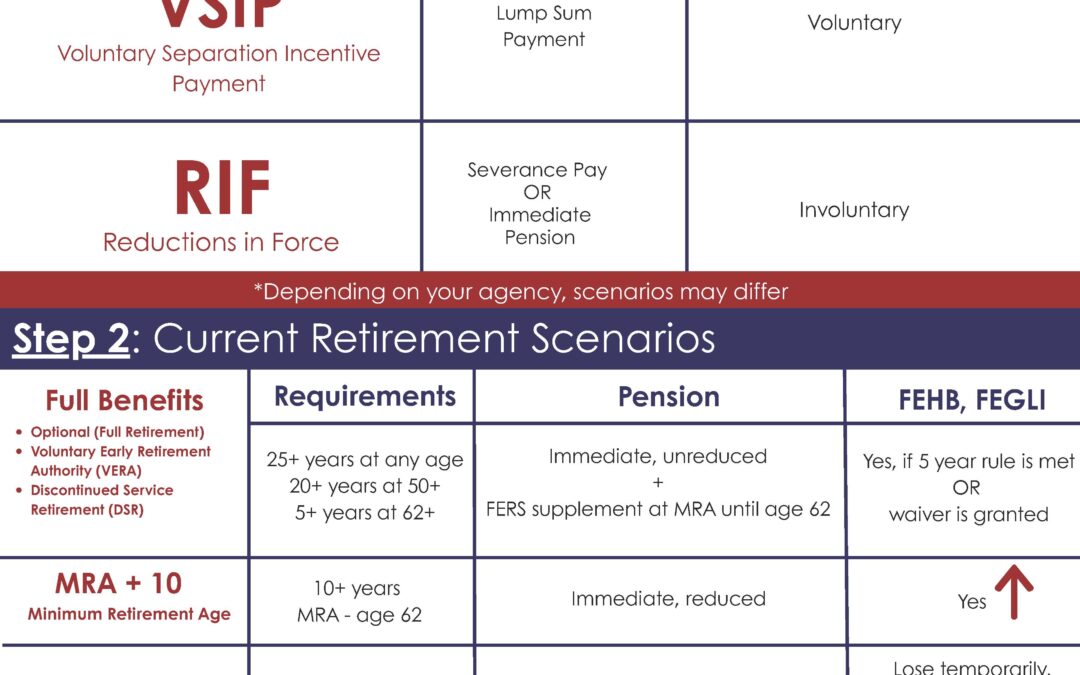 We’re answering your questions. This FAQ is built from OPM’s Guidance for Shutdown Furloughs as well as the questions you’ve asked us. Still have a question? Use the form below and we’ll do our best to get it added. What is a furlough? A...
We’re answering your questions. This FAQ is built from OPM’s Guidance for Shutdown Furloughs as well as the questions you’ve asked us. Still have a question? Use the form below and we’ll do our best to get it added. What is a furlough? A...
 STEP 1: Determine Your Retirement Eligibility What is your Current Age and how many Years of Creditable Federal Service? (Check your Service Computation Date or SCD on your Earnings & Leave Statement) Start at the top of “Requirements” and find your...
STEP 1: Determine Your Retirement Eligibility What is your Current Age and how many Years of Creditable Federal Service? (Check your Service Computation Date or SCD on your Earnings & Leave Statement) Start at the top of “Requirements” and find your...
 In the Federal Government, layoffs are called reduction in force (RIF) actions. When an agency must abolish positions, the RIF regulations determine whether an employee keeps their present position or whether the employee has a right to a different position. Being...
In the Federal Government, layoffs are called reduction in force (RIF) actions. When an agency must abolish positions, the RIF regulations determine whether an employee keeps their present position or whether the employee has a right to a different position. Being...
 Whether you accepted the deferred resignation offer, retire from federal service, or your position is ultimately eliminated, there are five things every federal employee should know before they separate from service: 1. What type of Retirement are you eligible for...
Whether you accepted the deferred resignation offer, retire from federal service, or your position is ultimately eliminated, there are five things every federal employee should know before they separate from service: 1. What type of Retirement are you eligible for...
 What is VERA? VERA, often called an “early out,” stands for Voluntary Early Retirement Authority and allows eligible FERS employees to retire earlier than they normally could under standard retirement rules. It’s a tool agencies use during...
What is VERA? VERA, often called an “early out,” stands for Voluntary Early Retirement Authority and allows eligible FERS employees to retire earlier than they normally could under standard retirement rules. It’s a tool agencies use during...
 1. Cost Increases Dramatically Over Time One of the most significant drawbacks of FEGLI is the escalating cost. As you age, premiums increase steeply, making the program much more expensive. For many federal employees, this cost spike can strain retirement budgets....
1. Cost Increases Dramatically Over Time One of the most significant drawbacks of FEGLI is the escalating cost. As you age, premiums increase steeply, making the program much more expensive. For many federal employees, this cost spike can strain retirement budgets....







